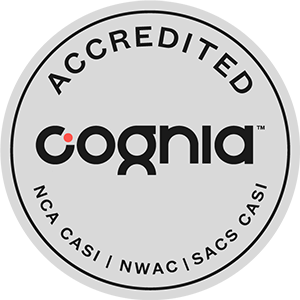About Coffee County Schools
Accreditation
2019 Accreditation Report
Our Mission
Destination Graduation for College, Career, and Life
Our mission is the purpose for which we exist as a school system.
Our Vision
Creating a stronger community through an equitable and excellent education for every student.
Our vision describes a future state to which we aspire as a school system.
Our Beliefs
WE ARE COFFEE...
Community – We foster and sustain strong community partnerships.
Opportunity – We provide opportunities for all students to learn, thrive, and succeed.
Focus – We focus on raising student achievement and preparing our students for their future.
Fairness – We ensure all children equitable access to the resources necessary for academic success.
Ethics – We promote integrity and honest communication and maintain responsible stewardship of resources.
Excellence - We pursue the highest standards in educational and operational performance.
Our Focus Areas
Strategic Goal: Employ teaching strategies that develop students' knowledge and skills for college and career readiness.
Strategy 1: Define and develop a framework for Project-Based Learning (PBL) at each grade level or grade band.
Strategy 2: Develop and implement performance-based assessments.
Strategy 3: Expand literacy initiatives, implement early learning collaborative and implement cursive handwriting instruction.
Strategy 4: Develop and provide ongoing professional learning and Professional Learning Communities (PLCs) in PBL, performance-based assessments, Illuminate (data management system), and literacy initiatives.
Strategic Goal: Develop students' essential knowledge and skills for college and career readiness (CCR).
Strategy 1: Implement Georgia state standards and best practices and monitor for standards-based classrooms.
Strategy 2: Develop and implement instruction that is rigorous, data driven, and promotes global awareness, problem solving, creativity and innovation, and critical thinking.
Strategy 3: Promote and provide continued training and support for implementation of state standards and technology integration.
Strategy 4: Monitor and adjust instruction to differentiate for individual learners' needs and institutions' learning expectations.
FOCUS AREA 2: Workforce and Life
Strategic Goal: Integrate employability skills into the curriculum and learning experiences from K through 12th grade.
Strategy 1: Create clear guidance and indicators of what constitutes appropriate employability skills development (K-12 Employability Skills) with input from outside stakeholders for all grade levels.
Strategy 2: Create and implement K-12 Career Development Plan (career awareness and development, job shadowing, internships, career fairs, guest speakers, field trips, mock interviews, list of resources).
Strategy 3: Administer and incorporate YouScience (career planning initiative) for 9-12 students.
Strategy 4: Incorporate career planning discussions into elementary advocacy plans/system K-5.
Strategic Goal: Develop a timeline for phasing in high-quality Academies in order to reach all students.
Strategy 1: Develop rigorous expectations that prepare all students for post-secondary studies and monitor progress using the data.
Strategy 2: Transform the secondary schools to themed academies with students scheduled in cohorts and teachers of CTAE and academics partnering to implement best practices. Adopt board policy to include academies.
Strategy 3: Set expectations for implementing and monitoring academies. Work collectively with post-secondary institutions for the benefit of academy students.
Strategy 4: Integrate rigorous academic and career-relevant learning. Expand and monitor personalized learning, accelerated learning, and additional help for struggling students.
Strategy 5: Implement a night school option.
FOCUS AREA 3: People and Culture
Strategic Goal: Prioritize professional development and form communities committed to shared learning that support schools and transform practice.
Strategy 1: Develop professional learning communities that enhance teacher effectiveness, increase student achievement and strengthen cultural competency.
Strategy 2: Lead, develop, and implement the transofrmation of the high school experience into academies and identify the resources needed for the academies.
Strategy 3: Secure and promote teacher externships, teacher post-secondary credentialing, and student real-world opportunities to enhance the school experience for all students.
Strategic Goal: Employ strategies that focus on the development of the whole child.
Strategy 1: Implement student support systems to enhance the development of the whole child, counseling, student attendance, engagement and anti-bullying.
Strategy 2: Continue to implement and monitor PBIS (Positive Behavior Intervention & Supports), student leadership development, LIPT (Local Interagency Planning Team), CHIN (Children in Need of Services), school wellness committees, and student advocacy plan initiatives.
Strategy 3: Design and implement consistent, updated safety plans and secure environments for all locations which include local partnerships, enhanced communication, active shooter and safety trainings, and implementation of Gaggle, Online Anonymous Reporting System, and SchoolGuard.
Strategy 4: Create alternative school placement options for elementary students.
Strategic Goal: Build leader development and teacher retention and recruitment.
Strategy 1: Implement and monitor the effectiveness of the Mentoring Program for new teachers and administrators.
Strategy 2: Provide growing leaders opportunities for all staff and recognition of outstanding employees.
Strategy 3: Expand opportunities for innovative staffing and minority recruitment.
FOCUS AREA 4: Family and Community
Strategic Goal: Engage the community in aligning employer and civic support through dedicated staff who facilitate industry council meetings and coordinate support for academies.
Strategy 1: Develop and implement written guidance and support of the academies
Strategy 2: Mobilize industry support and convene industry councils and pathway advisory boards to ensure ongoing focus of academies.
Strategy 3: Assign dedicated staff on each secondary campus to coordinate support for the academies.
Strategic Goal: Create a culture that builds community and parent understanding and ownership of our shared vision of creating college and career ready graduates.
Strategy 1: Develop and sponsor community events focused on the shared vision of creating college and career ready graduates.
Strategy 2: Develop active family engagement opportunities in all schools.
Strategy 3: Promote the importance of and attendance to Parent/Teacher conferences.
Strategy 4: Continue to secure community and post-secondary partnerships for the district and schools.
Strategy 5: Ensure School Governance Councils are taking an increased active role in school-level decision making.

